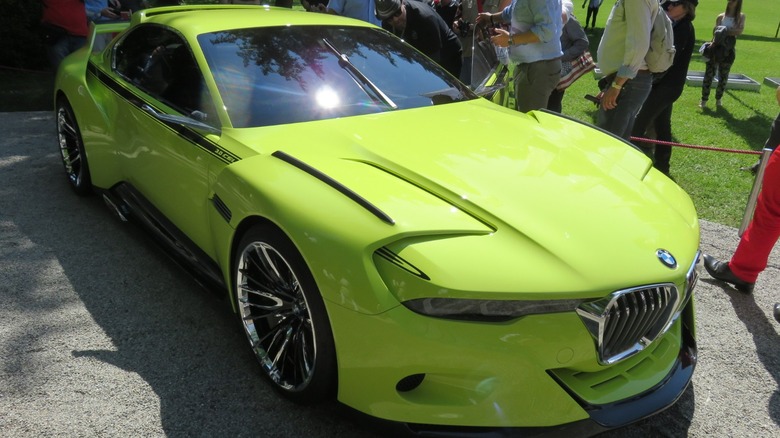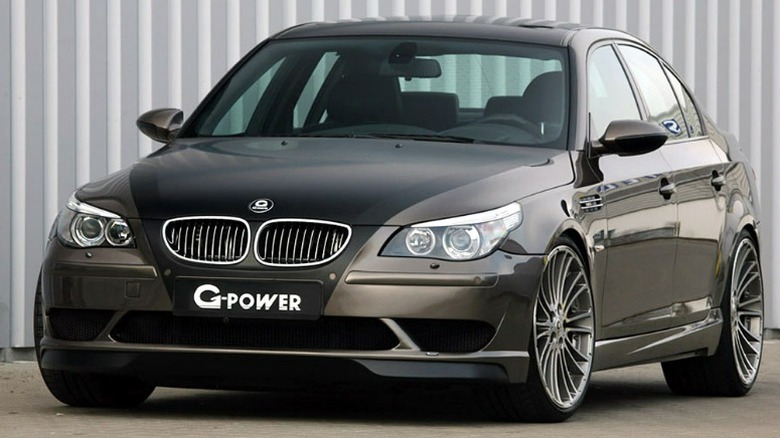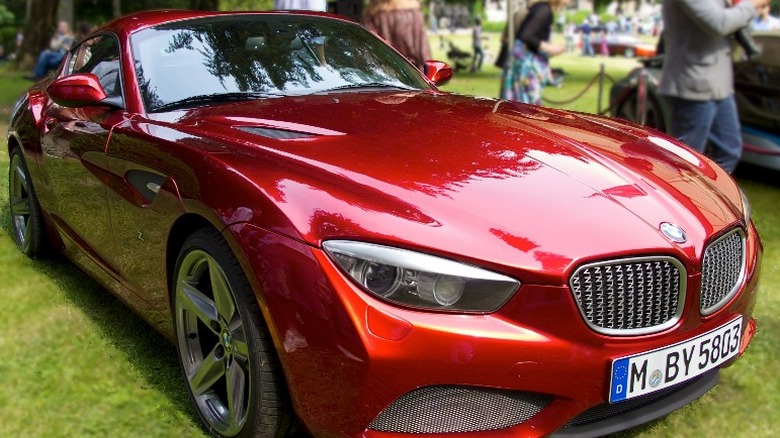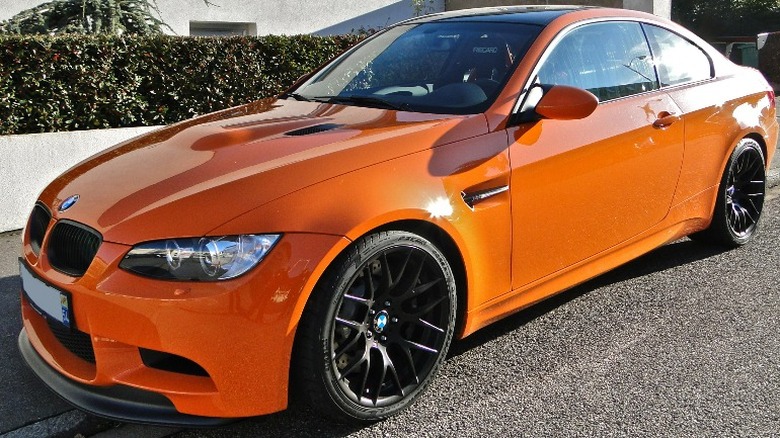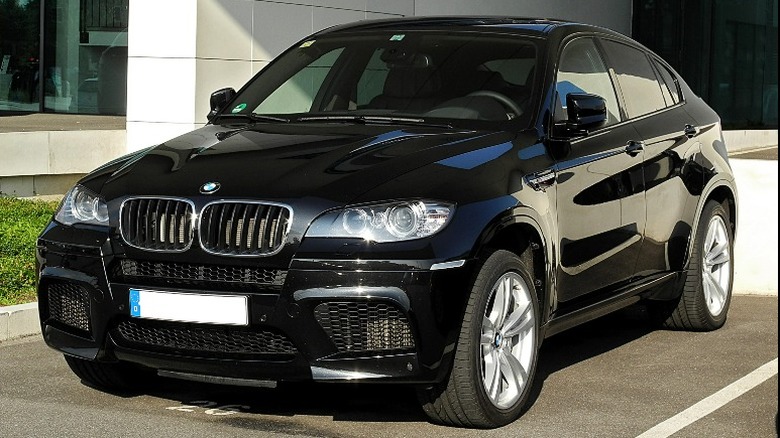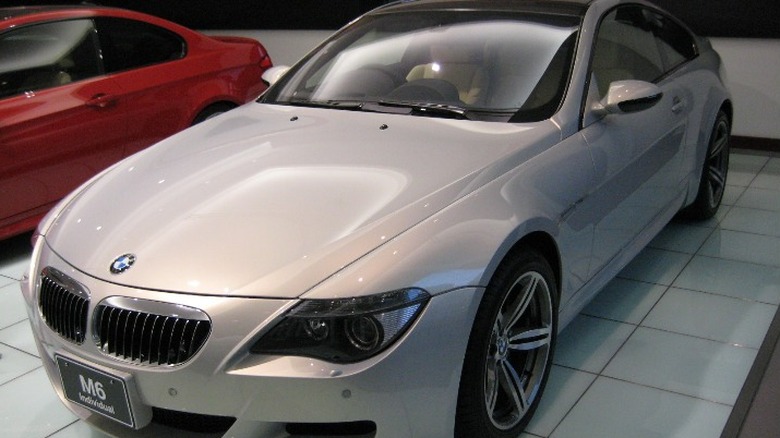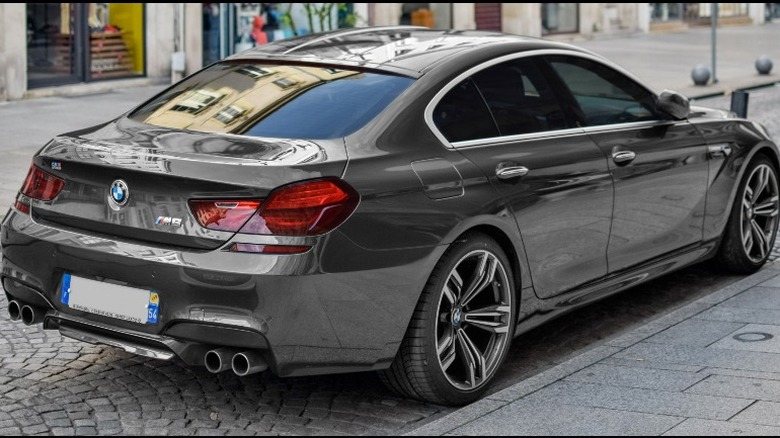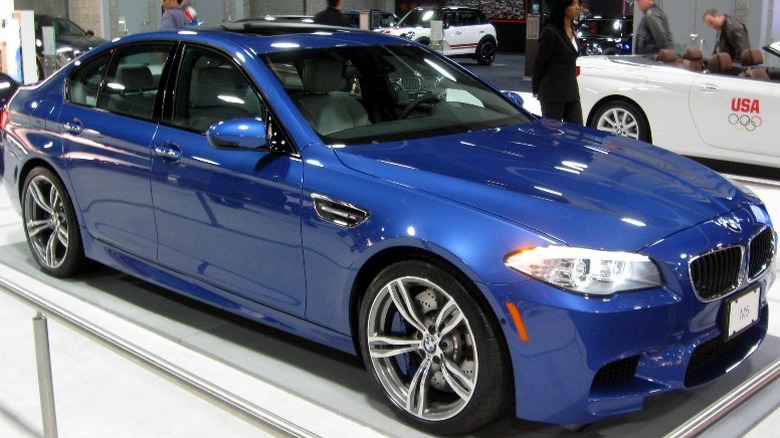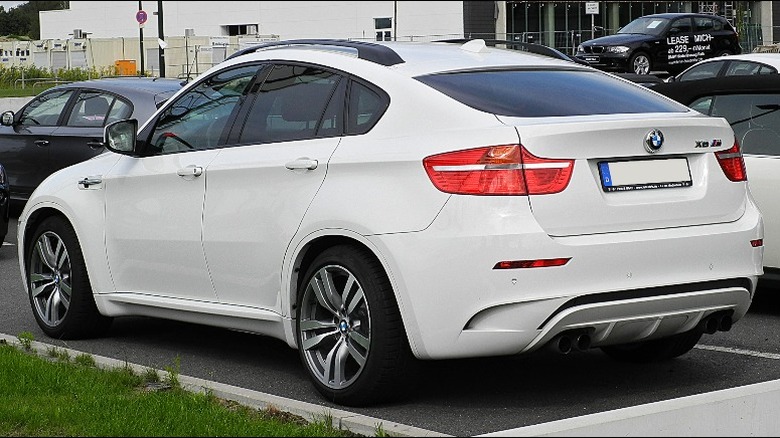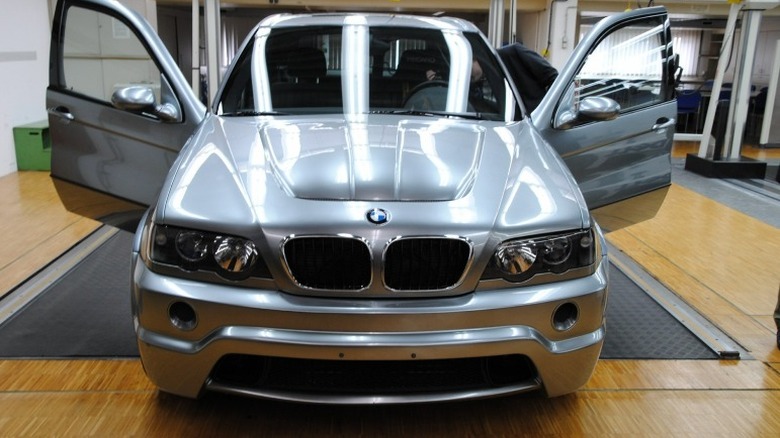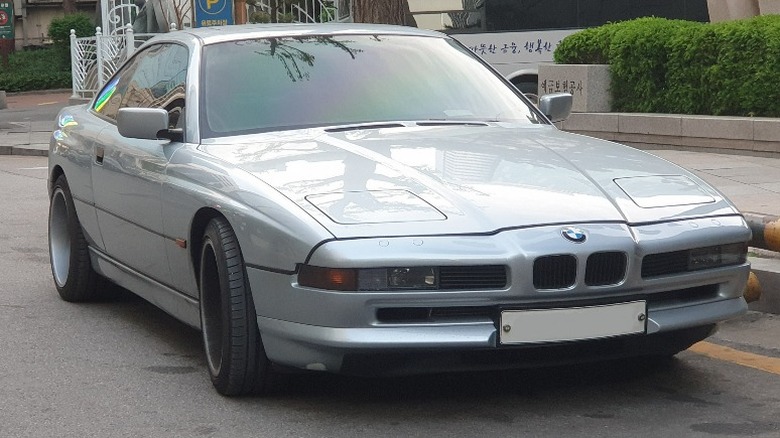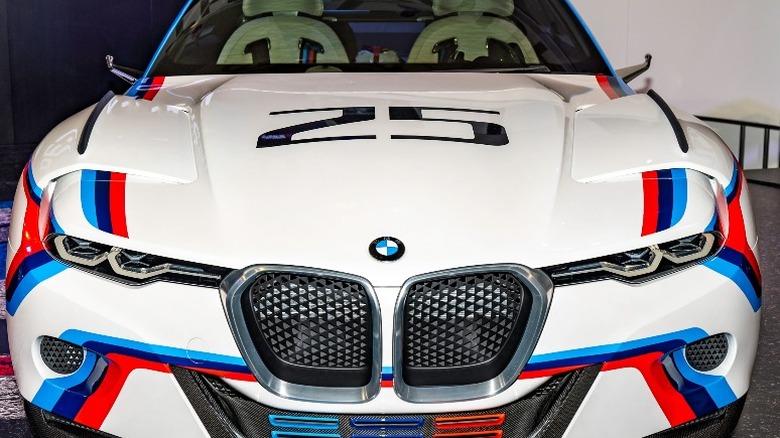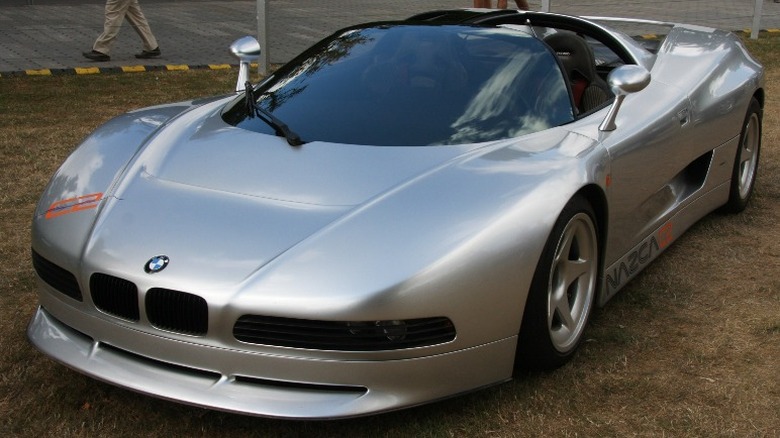12 Most Expensive BMWs Of All Time
For more than a century, BMW has been building high-quality luxury automobiles made with superb attention to detail, state-of-the-art luxury features, and respectable reliability when maintained properly. These characteristics, along with attractive body styling, have made BMW one of the best daily-driver deluxe makes. Although BMWs are more expensive than most other brands in their class, they offer a prestige not found in other cars with similar features. Driving a BMW is a status symbol, and many buyers are willing to spend a bit more to have it. Today, BMW offers a variety of styles from high-performance sedans to luxury SUVs.
While the German automaker does not produce a supercar to compete with Ferrari, Lamborghini, or Porsche, the company has produced a few models over the years that boast supercar features and prices. Many are customized by G-Power, a German car tuning manufacturer specializing in BMW cars. A few are concept cars that never made it to production while others were produced in limited quantities. Here are 12 of the most expensive BMW cars of all time.
2008 BMW M5 G-Power Hurricane RS: $400,000
Not everyone wants to drive an exotic sport such as a Bugatti Veyron, with world-class performance that attracts attention the moment it exits the garage. Some performance enthusiasts prefer a more subtle package. BMW and G-Power allow well-heeled buyers the opportunity to drive a supercar in the form of a sedan that seems more appropriate for hauling the kids to the Saturday soccer game.
Early in 2008, G-Power set the record for the fastest BMW sedan with the M5 Hurricane, timed at 224 mph. The Hurricane featured a 5-liter V10 engine with a G-Power BI-Kompressor system that delivers 635 horsepower. The system boasts an ASA compressor with an efficiency rate of up to 80%. The small size of the turbochargers permits G-Power to install two of them in the restricted space available in the M6 engine bay.
For the Hurricane RS version, the tuner augmented the power by enlarging the capacity of two superchargers. The enhanced V10 engine produced 750 horsepower (250 more than a stock M) and gave the M5 Hurricane RS a G-Power documented top speed of 228.4 mph. The sedan's speed is remarkable considering the record-holding SSC Ultimate Aero was only 29 mph faster.
However, the company states the BI-Kompressor system is still not operating at its maximum output, with G-Power CEO and engineer Christian Stöber noting it could be raised up to 1.0 bar or more.
2012 BMW Zagato Coupe: $500,000
In May 2012, at the Concorso d'Eleganza Villa d'Este, Lake Como, Italy, BMW unveiled the Zagato Coupe, a collaboration combining design features from both companies in a machine built entirely by hand.
Zagato, the Italian coachbuilder (carrozzeria), ranks with other famous designers such as Pininfarina, Scaglietti, Ghia, and Bertone. The company's designs are typically lightweight, sporty, and aerodynamic.
The BMW and Zagato partnership resulted in a curvaceous coupe, in part created by a double bubble roof designed to improve aerodynamics, add structural rigidity, and accommodate a crash helmet on the inside. The vehicle's extremely long hood is unquestionably a BMW element, while the headlamps and the BMW "kidney" radiator grille featuring the letter Z have the Zagato influence. A profile view demonstrates the muscular fender lines while the Kammback features an integrated spoiler that merges with the rear fenders. The Zagato Coupe continued a tradition of BMW collaborative designs including the 1959 BMW 3200 Michelotti Vignale, 1959 BMW 700, 1962 BMW 3200 CS Bertone, and the 1978 BMW M1.
BMW never officially revealed the Zagato's engine specifications. However, the prototype was most likely built with a tuned version of BMW's twin-turbo 3.0-liter straight-six producing around 400 horsepower. The exclusive sportscar blended Italian artistry with German engineering that never reached production. The estimated price of $500,000 is based on the sales of other modified BMWs such as the 2011 BMW M3 GTS G-Power.
2011 BMW M3 GTS G-Power: $550,000
The 2011 factory-built BMW M3 GTS was one of the most remarkable M3s ever made. The car featured a racing suspension, roll cage, lightweight body panels, carbon aerodynamic parts, titanium exhaust, and six-point seatbelts attached to racing bucket seats. The BMW M3 GTS and its sibling M3 CRT were two of the most exclusive M3s the company has produced. The M3 GTS was limited to just 150 units, while the M3 CRT was even rarer with only 67 units built the following year. BMW fitted both models with the S65 4.4-liter V-8 engine producing 450 horsepower and 324 lb-ft of torque.
However, G-Power, claiming to be the only BMW tuner with an upgrade for the S65 engine, offered the Sporty Drive TU supercharger system that gave the car superior performance. G-Power added a lightweight, all-titanium exhaust system equipped with 100 cpsi metal catalytic converters that reduced the exhaust backpressure to an ideal level for the SK II supercharger.
The extraordinary increase in power resulted in 650 horsepower and 480 lb-ft of torque. The M3 GTS acceleration dropped from 0 to 62 mph in 4.4 seconds to 4.1 seconds and the top speed improved from 180 mph to 200 mph. BMW offered the original M3 GTS for $145,280. G-Power sold the supercharger upgrade for about $32,000. Over the years, the demand for the rare high-performance BMW has driven the value up, now estimated at $550,000.
2012 BMW X6 M G-Power Typhoon Wide Body: $760,000
In 2012, the BMW X6 M Typhoon from G-POWER ranked as one of the world's fastest cars, using 725 horsepower to push the car to a top speed of more than 186 mph. G-Power designed the wide body kit using state-of-the-art CAD technology with digital input from an in-house 3D scanner. The body kit, made from PU RIM (Polyurethane Reaction Injection Molding), features flared wheel arches with distinctive front and rear skirts and spoilers optimized for maximum aerodynamic efficiency.
The Typhoon offers seven centimeters more width than the standard BMW X6 allowing the use of extra-wide 23-inch wheels and tires. The G-Power Silverstone Edition includes forged wheels in sizes 11Jx23 up front and 12Jx23 on the rear with Michelin 315/25 ZR 23 high-performance rubber at all four corners. Add the G-POWER Coilover suspension with independently adjustable rebound and compression damping, and the X6 M G-Power Typhoon delivers optimum traction and sporty handling.
G-Power boosted the power of the Typhoon Wide Body over the base model by an impressive 170 horsepower, with enlarged air intakes in the front skirt, the outlet vents in the hood, and flow-optimized G-Power exhaust manifolds connecting the turbochargers. The modified BMW V8 bi-turbo power unit mated to a standard BMW X6 M automatic transmission accelerates the BMW to 62 mph in 4.2 seconds. Lightweight and reliable ceramic brakes with 6-piston brake calipers on the front and rear axle provide the stopping power with little or no fade.
2009 BMW M6 G-Power Hurricane CS: $760,000
To set the record in 2009 as the "World's fastest BMW Coupe" at 211 mph, Michelin changed the standard tires on the Hurricane CS for a set of Pilot Sport PS2 255/35 ZR 19 in front and 305/30 ZR 19 on the rear axle. G-Power enhanced the M5 Hurricane's V10 engine with performance-based tweaks including redesigned twin superchargers, optimized mapping of the ECU, and a new exhaust system made from titanium weighing 53lbs less than the factory exhaust.
The CS also featured a unique carbon fiber widebody with aerodynamics to reduce drag, help keep all four wheels on the ground, and reduce weight. The engine delivered an output power of 750 horsepower, available between 7,500 and 8,000 rpm, and a peak torque of 590 lb-ft at 5,000 rpm. Weight-reducing measures including the use of carbon fiber seats helped the 2-door coupe accelerates to 62 mph in less than 4.4 seconds and achieves a top speed near 230 mph.
BMW fitted the G-Power BMW M6 Hurricane CS with a Coilover RS suspension adjustable to nine different settings, each for bound and rebound. The various positions optimize performance and provide a smooth and comfortable ride based on driving conditions and road speed. G-Power also installed its anti-roll-bar kit for the front and rear axles. The ventilated carbon ceramic disc brakes with six-piston calipers ensure consistent and effective braking even at high speeds.
2015 BMW M6 G-Power Hurricane CS Ultimate: $800,000
G-Power modified the exterior of the standard M6 with a Hurricane carbon fiber wide body kit. The changes, including extended wheel arches and large air intakes, made a significant impact on the car's aerodynamic properties. The company added an ultra-lightweight titanium exhaust system featuring high-flow racing cats, two centrally positioned tailpipes, and a Formula 1-style soundtrack.
While these mods helped the car achieve an impressive top speed, the engine improvements made the biggest difference. The 5.0L V10 engine enhancements, including two superchargers, a redesigned cold air intake system, larger charge air coolers, and water and oil coolers helped produce a whopping 1001 horsepower and 664 lb-ft of torque. The Bugatti Veyron class power represents a 494 hp and 280 lb-ft gain over the stock BMW M6. The Hurricane CS Ultimate can accelerate to 62 mph in a mere 4.3 seconds, 124 mph in 9 seconds, and 186 mph in 21.5 seconds. With an optional taller final drive, the car reaches a top speed of 231 mph.
G-Power upgraded the suspension to help support the additional power. The tuner lowered the vehicle's center of gravity with a set of fully adjustable Coilovers to ensure stability at high speeds. The upgraded brakes provide braking power with 400 mm vented carbon ceramic discs. The Hurricane CS Ultimate grips the road via forged alloys mated with 255/25ZR21 and 295/30ZR21 Michelin tires.
2012 BMW M5 G-Power Hurricane RRs: $800,000
With the help of two ASA T1-316 superchargers, the 2012 BMW M5 G-Power Hurricane RRs generated 830 horsepower, making it the fastest sedan in the world at the time. G-Power replaced the ASA T1-313 BI-Kompressor "Sporty Drive" system bwith the larger ASA T1-316 units. Both superchargers are belt-driven, providing each cylinder bank with denser compressed air, cooled down for maximum power output.
Inside the V10 engine, G-Power installed lightweight and precisely balanced MAHLE high-performance forged pistons with increased mechanical strength and lower compression. The tuner also enhanced the fuel supply system capacity with upgraded with enlarged mass flow fuel injectors and an additional high-performance fuel pump. G-Power's electronic control unit enabled the third fuel pump to operate based on the required boost, guaranteeing a reliable fuel supply under all conditions. G-Power optimized the backpressure with the Speedflow exhaust system featuring two racing catalysts, stainless steel rear muffler, and M-Design 4x83 mm tailpipes.
All the G-Power upgrades contributed to the power output of 830 horsepower available between 7,500 and 8,000 rpm and a maximum torque of 576 lb-ft at 6,500 rpm. The BMW M5 G-Power Hurricane RRs accelerated from 0 to 62 mph in just 4.3 seconds, to 124 mph in 9.1 seconds, and to 186 mph in 25.2 seconds. The Hurricane RRs offered a height-variable G-Power RS Coilover suspension adjustable for both compression and rebound in nine settings and the high-performance G-Power brake system with up to six brake pistons.
2011 BMW X6 G-Power Typhoon S: $800,000
The Typhoon S is an SUV with supercar performance characteristics. G-Power tuned the car with both aerodynamic and performance improvements while leaving the interior virtually untouched.
The BMW-specialized tuner modified several BMW X6s before the 2011 model, but the company has made a significant effort to keep each version unique. The "Typhoon S" comprehensive tuning package for the Typhoon S included both performance and aerodynamic enhancements achieved with a modified exterior that changed the car's appearance while improving airflow. The company lowered the SUV's overall height by 30mm and implemented a body kit featuring a redesigned front skirt with larger air intakes. A new lightweight carbon fiber hood featuring a central Venturi-style engine bay vent for even airflow matches the two lateral ABS grilles that provide stationary ventilation. The German tuner also upgraded the SUV with a set of 23-inch forged 3-part Silverstone RS aluminum wheels supporting Michelin tires.
The Typhoon S body kit, with its enlarged air intakes and hood vents, facilitated an increase in the flow of cold air to the water and oil coolers. The 15% improvement in cooling performance allowed the 4.4-liter twin-turbo V8 to generate 170 horsepower more than the base output, arriving at a formidable 725 horsepower and 656 lb-ft of torque. The power improvements gave the SUV exceptional acceleration of 0 to 62 mph in 4.2 seconds and a top speed of 186 mph.
2000 BMW X5 Le Mans Concept: $1 Million
BMW celebrated its victory at Le Mans in 1999 by fitting a version of the V12 engine that won the race into its family-friendly X5 model. The result was a monster that accelerated from 0 to 60 mph in 4.7 seconds, with an electronically limited top speed of 193 mph. BMW debuted the X5 Le Mans at the 2000 Geneva Motor Show, indicating at the outset the SUV would be a one-off project. Although the company hinted the V12 might arrive in the X7 flagship SUV, today the most powerful engine in the 2023 X7 is a 523-horsepower twin-turbo V-8.
The naturally aspirated 6.0-liter V12, also used by the BMW V12 LMR, crammed inside the engine bay created the world's only BMW X5 with twelve-cylinder power and remained for years the most powerful factory BMW SUV made. Fitted in the X5, the legendary McLaren F1 mill with a pair of turbos produced a healthy 700 horsepower and a maximum torque of 531 lb-ft at 5,000 rpm. It sent power to the rear wheels via a six-speed manual gearbox.
The exterior of the X5 Le Mans looked about the same as the regular production X5 model sans the 315/35/20-inch wheels at all four corners. Changes to the interior included the installation of four bucket seats with aluminum frames and the replacement of the radio with instrument dials.
1990 BMW M8 Prototype, E31: $1 Million
BMW canceled the M8 Prototype project due to high production costs and limited sales value. Only one unit was made, worth at least $1.0 million. The M8 remained under wraps for almost two decades until 2010. Only a few pictures and limited video footage expose the fire engine red supercar. The bold stance created by widely flared wheel arches, large air intakes in the side panels, and aerodynamically shaped racing wing mirrors define the character of this refined high-performance car.
As magnificent as the exterior is, the BMW M8 E31 prototype's 6-liter engine is the car's outstanding feature. Developed from the S70 engine, the power unit featured a highly visible carbon fiber intake system and roller valves that replace the classic throttle valves. The components allowed unimpeded flow at full load and contributed to weight reduction. The most powerful BMW 8 Series in 1990 was the 850Csi producing 380 hp. By comparison, the M8 Prototype's front-mounted naturally aspirated 6-liter V12 coupled with the 6-speed manual transmission would have little competition generating up to 640 horsepower at 7,500 rpm and 480 lb-ft of torque.
Although official measurements were never conducted by BMW, the M8 Prototype would most likely beat a 1992 BMW 850CSi that accelerated to 62 mph in 6.0 seconds. Perhaps more impressive is the estimated top speed of 186 mph.
2015 BMW 3.0 CSL Hommage Concept: $1.5 Million
In August 2015 BMW introduced its 3.0 CSL Hommage Concept, based on the E9 3.0 CS/CSi at the Concours d'Elegance in Pebble Beach California. The car celebrated both the 40th anniversary of BMW in North America and the racing success of the BMW 3.0 CSL in 1975. The racecar, with its extreme aerodynamic package (nicknamed the "Batmobile"), celebrated victories at Daytona, Sebring, and Talladega. The BMW 3.0 CSL accumulated more than 100 wins during its racing days.
BMW describes the 2015 3.0 CSL Hommage as a concept car that "exudes sheer dynamics through its striking air deflectors, powerful wheel arches, and subtle and finely sculpted surfaces." The details replicated from the original 3.0 CSL include the massive rear fenders, the roof spoiler, and the large rear wing along with the BMW badge on the C-pillar, the Hofmeister Kink in the quarter window, and the stripe running along the beltline.
The 2015 3.0 CSL Hommage powertrain is significantly different from the original. While both versions use a six-cylinder engine, the 1975 model generated 438 horsepower at 8800 rpm, accelerated to 60 mph in 6.5 seconds, and reached a top speed of 155 mph. The newer model is a hybrid with an estimated 500 horsepower. The estimated acceleration is 0-60 mph in 5 seconds with a maximum speed exceeding 155 mph.
1991 BMW Nasca M12 and C2: $3,000,000
BMW created a sensation at the Geneva Motor Show in March 1991 when the German automaker introduced the Nasca M12. Fabrizio Giugiaro, son of Italdesign founder and celebrated designer Giorgetto Giugiaro, designed the masterpiece that was the natural evolution of BMW's first modern supercar, the 1978 M1.
Both cars employed the same characteristic BMW "kidney" grill, low profile, and mid-engine layout. However, Giugiaro designed the M12 with a completely round greenhouse. The configuration with a steep compound curve of the glass meant that split doors had to be fitted. Gullwing side windows rose from conventionally hinged doors and the glass roof structure provides the driver and a passenger an unhindered, panoramic view outside.
The team at Italdesign not only built prototypes but could also manufacture and test their designs. The fully functioning prototypes were complete enough to be considered preproduction models and so it was also the case with the M12. Under the hood of the carbon fiber body, Italdesign fitted BMW's best available engine, the BMW 750i, and 850i V12. The 5-liter powerplant produced 300 bhp at 5200 rpm and 332 lb-ft of torque at 4100 rpm. Mated with a five-speed manual transmission, the supercar accelerated to 60 mph in an estimated 4.5 seconds and reached a top speed of 180 mph. The M12 never entered production making the exact value difficult to determine
